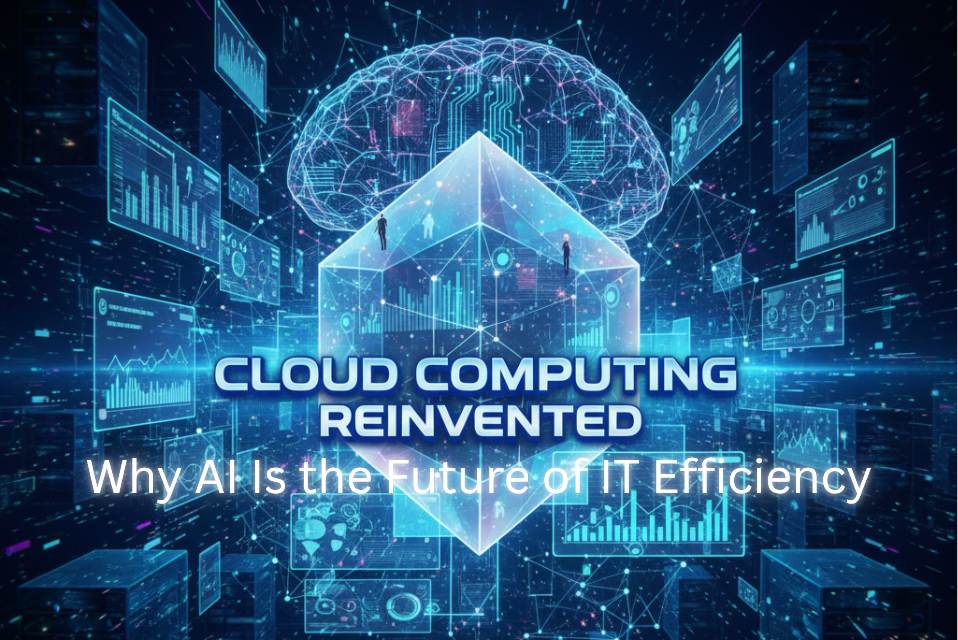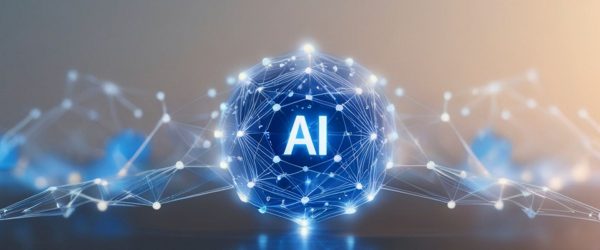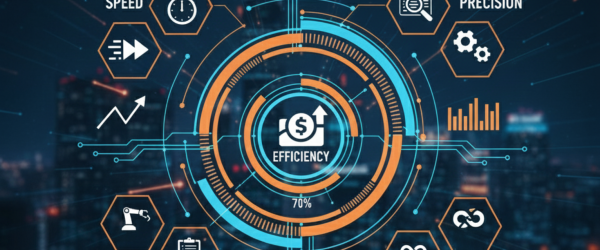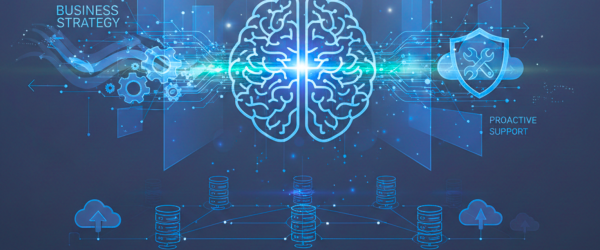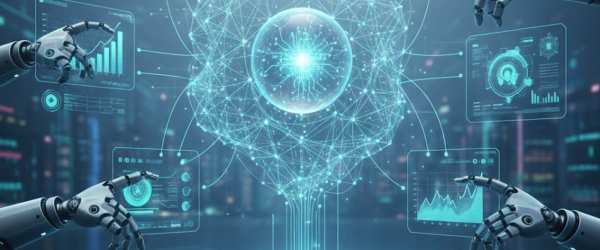Introduction
Cloud computing was designed to deliver scalability and agility. Yet, as modern IT environments grow more complex—spanning hybrid clouds, containers, and serverless architectures—the promise of efficiency often clashes with the reality of operational cost and management complexity. Infrastructure management has devolved into a cycle of manual alerts, reactive scaling, and relentless troubleshooting.
The solution is not a new kind of hardware or a different hypervisor; it is Artificial Intelligence (AI). By deeply integrating AI and Machine Learning (ML) into operational processes, cloud computing is not just evolving—it is being fundamentally reinvented. This shift is giving rise to AIOps (AI for IT Operations), the engine that drives true, self-optimizing, and measurable IT efficiency.
The Efficiency Imperative: Battling Cloud Waste
The traditional model of cloud management—relying on human teams to monitor thousands of metrics and manually provision resources—is fundamentally inefficient.
The core challenge is Cloud Waste. Research consistently shows that a significant portion of cloud spending is wasted on idle resources, over-provisioning, and underutilized licenses. A recent Flexera report found that enterprises waste approximately 32% of their cloud spend (Flexera, 2024). This waste is a direct result of relying on static rules and reactive scaling, where resources are left running “just in case.”
AIOps, in contrast, moves the system from a state of reaction to proactive prediction, optimizing resource allocation based on actual, forecasted needs.
AI as the Engine of Autonomous Operations
AIOps leverages advanced machine learning algorithms to process the massive volumes of operational data (logs, metrics, and network traffic) that overwhelm human operators. It delivers efficiency across three core domains:
1. Hyper-Predictive Scaling and Capacity Planning
Traditional auto-scaling is reactive; it triggers resource addition after a threshold is crossed. AI enables predictive scaling. By analyzing historical usage patterns, seasonal demand, and even external factors like marketing campaign schedules, ML models forecast future workload requirements with high accuracy.
This proactive approach eliminates latency and service degradation while ensuring resources are shut down precisely when needed. Gartner estimates that organizations implementing AIOps for capacity planning can achieve 20% to 30% reduction in cloud operational costs by optimizing resource utilization and eliminating guesswork (Gartner, 2023).
2. Intelligent Incident and Anomaly Detection
The sheer noise of alerts and false positives is a primary source of inefficiency for IT teams. AIOps platforms use clustering and statistical anomaly detection to distinguish genuine issues from routine system noise.
By establishing a baseline of “normal” system behavior, AI can identify subtle, multi-layered anomalies that span across different systems and logs, often flagging a problem before it impacts the user. This dramatically reduces Mean Time to Resolution (MTTR). A study by IBM found that organizations leveraging AI to assist in incident resolution reported a 40% faster response time to critical issues (IBM, 2023).
3. Automated Root Cause Analysis (RCA)
Once an anomaly is detected, AI doesn’t just alert the human team; it performs instantaneous RCA. By correlating thousands of seemingly disparate events across multiple infrastructure layers (application, network, database), the platform pinpoints the single, true cause of a failure. This eliminates hours of manual searching by specialized engineers, shifting the focus from investigation to remediation.
The Shift: Traditional IT vs. AIOps
The move to AIOps fundamentally changes the role of IT professionals—shifting them from firefighting to strategic engineering.
| Operational Area | Traditional Cloud/IT | AIOps-Driven Cloud | Efficiency Impact |
| Capacity Management | Manual provisioning; Reactive auto-scaling; Constant over-provisioning. | Predictive Resource Forecasting; Automated start/stop based on ML models. | Major Cost Reduction (20-30%) |
| Incident Response | Alert fatigue; Manual log correlation; Slow, complex Root Cause Analysis (RCA). | Noise Reduction (high fidelity alerts); Automated RCA; Self-healing scripts initiated. | Faster MTTR (up to 40%) |
| Maintenance | Scheduled or reactive patch management; Downtime required. | Proactive Predictive Maintenance; Automated, non-disruptive rollouts based on risk assessment. | Maximized Uptime and Reliability |
Conclusion: The Path to the Autonomous Cloud
The ultimate evolution of cloud computing, powered by AI, is the fully Autonomous Cloud. This is an environment capable of self-healing (automatically fixing component failures), self-optimizing (continuously improving performance and cost), and self-protecting (adapting security policies in real-time).
For IT leaders and engineers, embracing AI is no longer a strategic option—it is a competitive necessity. The move to AIOps fundamentally changes the role of IT teams, shifting the focus from manual maintenance to innovation and strategic architecture. The future of IT efficiency lies not in working harder to manage complexity, but in intelligently automating that complexity away to unlock massive scalability and cost savings.

